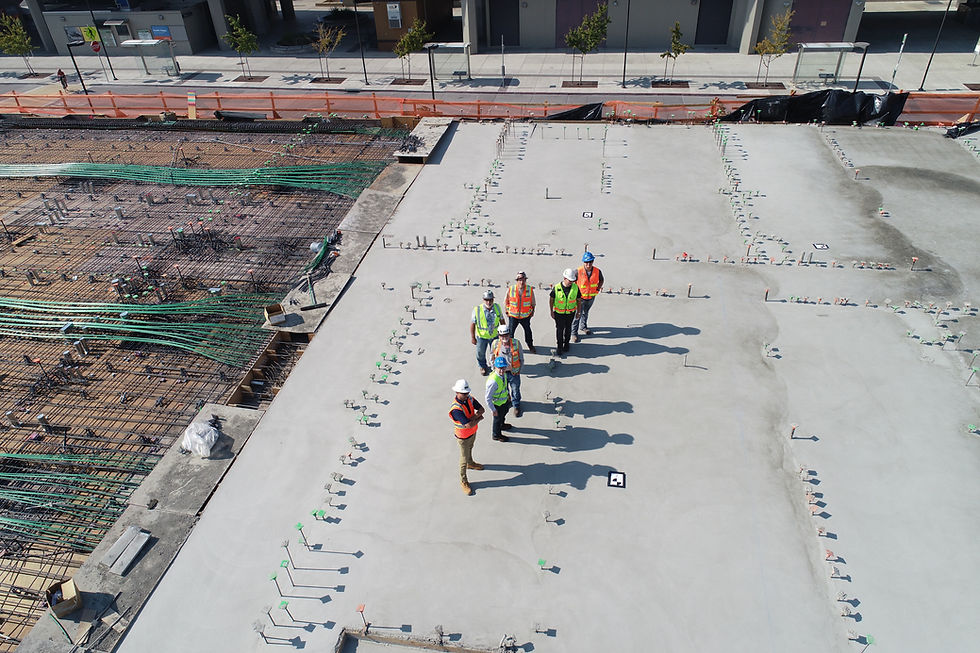
Cost pressures, labor shortages, spikes in lumber costs and trends toward fixed-bid projects are pushing the construction industry to a redefinition or disruption of its own business models due to skilled labor shortage, resources scarcity, and environmental impacts. These pressures are creating sustainable megatrends that can bring a much needed certainty of to costs, schedules, and scopes to the broader AEC (Architecture, Engineering and Construction) community. These megatrends will radically transform industry’s processes into more sustainable and resilient ones, while providing efficient solutions to labor shortages, waste management, diversity inclusiveness, and worker safety while addressing economic uncertainty, labor shortages, prefabricated and modular construction, energy availability, demographic changes, the digital and broader technological revolution, and climate change mitigation which are significantly affecting and challenging the construction value chain.

These megatrends have the potential to address inefficiency and low productivity while greatly improving the construction value chain and by mapping the construction value chain with creating innovative opportunities like:
Reduce energy use in buildings (i.e. capturing some of the value of the energy saved).
Supply extra comfort for building occupants (e.g. through building control systems).
Provide on-site energy production or grid management services.
Meet citizens’ desires to become low-carbon consumers.
Have industrialized and streamlined services with lower costs and less burden.
These megatrends, while “disrupting” the construction value chain, are also creating multiple potential innovations that provide opportunities for those engaged in looking to capturing new sources of revenue. These innovations span technology, organization, marketing, services and products. They are driven by a few important factors, namely consumer demand/preferences, regulatory signals and manufacturer choice. These drivers are interlinked and influenced by other macro factors such as energy prices as well as resource and infrastructure availability.
According to the European Union Commission’s Economic Report (Stepping Up Europe’s 2030 Climate Ambition, Investing in a Climate-Neutral Future For The Benefit of Our People - September 9, 2020), green-construction-related patent filings have tripled in little over a decade, with most dynamic patenting occurring in areas such as HVAC, highly efficient insulation, green lighting and building-related small-scale renewable energy technologies.
Multiple opportunities for the construction value chain arise – driving marginal change, more fundamental/disruptive change or holistic solutions (e.g. such as industrialized off-site construction or Internet of Things for smart controls). These innovation opportunities are appearing both upstream (e.g. for example in product innovation of super insulating material) and downstream (e.g. for example automated monitoring of installation performance) in the value chain.

Innovation will occur within companies, but also within ecosystems concentrating on a specific phase in a buildings’ life cycle, for example collaboration models between architects, contractors and investors during the construction phase; or building automation for existing households set-up and designed by an installer for a specific family during operation phase.
There are however some barriers and challenges for innovation in the construction value chain.
An uncertain economic and policy outlook that can make it difficult to justify investment in innovation (e.g. such as missing energy renovation targets for the existing building stock, uncertainty on about support measures or the fact that only 50% of the member states have a view on the compliance rates of new buildings with energy performance requirements);
The need to manage risk inherent to innovation projects because they aim to develop and deploy completely new processes or products; and
The need to balance collaboration to protect knowledge.
To address these challenges, a proactive innovation strategy is required in the construction value chain to capture that new market, with potential further deregulation opening up the markets for innovation as well as greater co-ordination of an ecosystem of players. The transition at the demand side opens as well opportunities for innovations less related to a specific technology, and more to solution or system-led innovations (e.g. building automation). The calculation of costs and benefits, not only from the financial point of view, but also taking into account the cost to society for higher comfort and better health. Ambitious energy efficiency renovations should be approached as a combination of cost, comfort and health, where the broader impact on society should also be monetized.
Nvolve Technologies, like many others, has at its heart transformative and massively deployable innovation. We create new technologies and processes to help this industry to transition to a new global economy, one that is shaped by the green, sustainable materials, better-built structures using ordinary labor, decarbonization, design/architect/build digitization, mass customization, servitization, greater use of a circular economy methodology and resource efficiency.


Comments